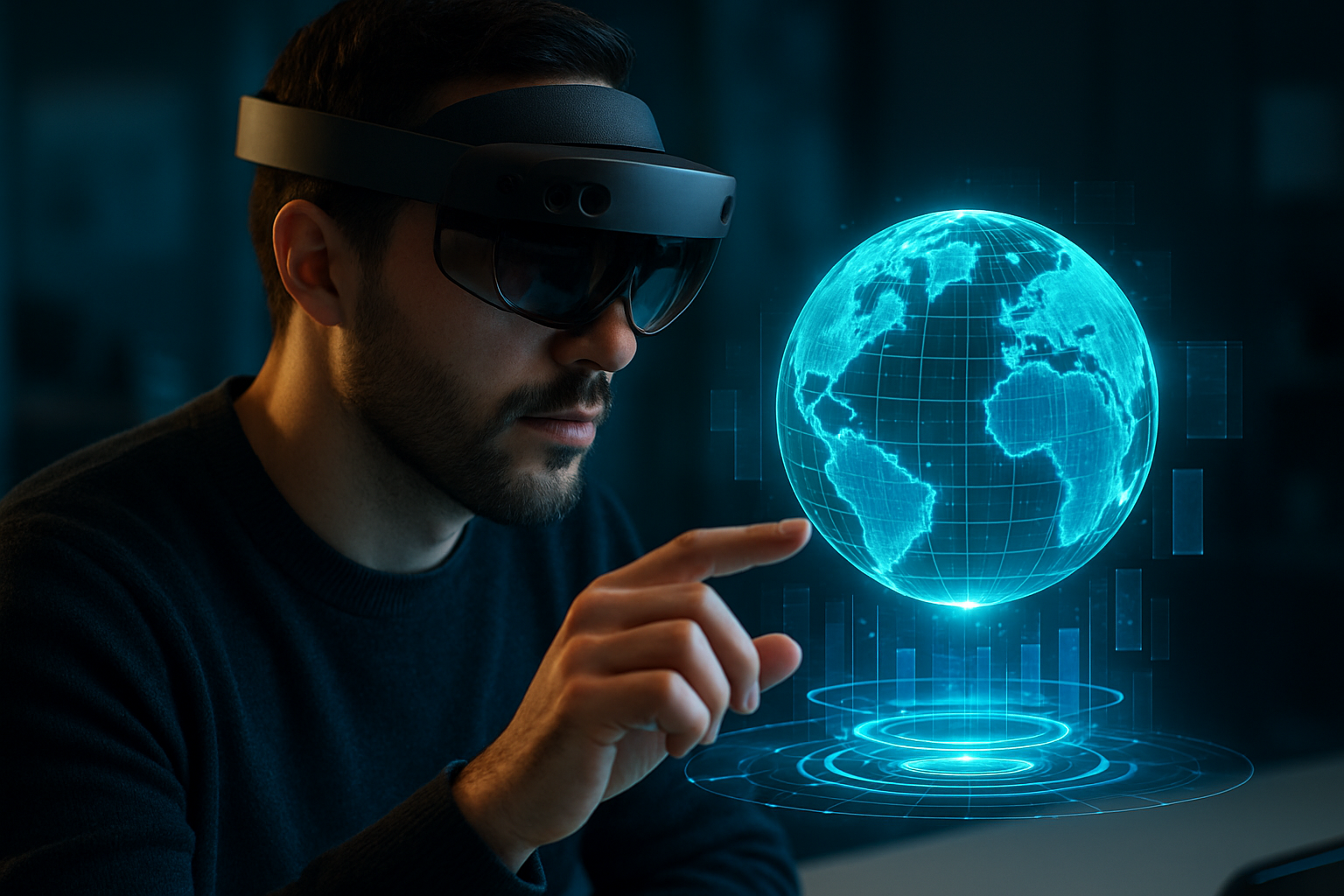Holographic Wearables: The Next Frontier in Personal Computing
In a world where the lines between digital and physical realities continue to blur, holographic wearables are emerging as a groundbreaking technology that could revolutionize how we interact with information and our surroundings. These futuristic devices project three-dimensional images directly into our field of vision, offering an immersive experience that goes beyond traditional augmented reality. As tech giants and startups alike pour resources into this field, we stand on the cusp of a new era in personal computing that promises to transform everything from entertainment to professional workflows.

Early prototypes were bulky, power-hungry, and offered limited image quality. But as advancements in optics, microprocessors, and battery technology accelerated, the dream of compact, wearable holographic devices started to take shape. By the mid-2010s, several tech companies had begun investing heavily in research and development, recognizing the potential of holographic wearables to become the next big thing in personal computing.
How Holographic Wearables Work
At the heart of holographic wearables lies a complex interplay of cutting-edge technologies. These devices typically consist of a lightweight headset or glasses equipped with advanced optics, miniature projectors, and powerful processors. The system works by projecting light patterns that interact to create three-dimensional images that appear to float in mid-air.
One of the key challenges in developing holographic wearables has been achieving high resolution and brightness while maintaining a compact form factor. Recent breakthroughs in micro-LED technology and waveguide optics have allowed for significant improvements in image quality and device size. Additionally, advancements in eye-tracking and gesture recognition enable more intuitive interactions with holographic content.
Applications Across Industries
The potential applications for holographic wearables span a wide range of industries and use cases. In healthcare, surgeons could use these devices to visualize complex anatomical structures in 3D during procedures, enhancing precision and reducing risks. Architects and engineers could walk through virtual models of their designs, identifying potential issues before construction begins.
In education, holographic wearables could transform the learning experience by bringing abstract concepts to life. Students could explore the inner workings of a cell or witness historical events as if they were there. For entertainment, these devices could usher in a new era of immersive gaming and interactive storytelling, blending digital content seamlessly with the real world.
The Market Landscape and Key Players
As the technology matures, a growing number of companies are entering the holographic wearables market. Established tech giants like Microsoft, with its HoloLens platform, have been at the forefront of development. However, nimble startups are also making waves, introducing innovative designs and use cases.
Industry analysts project that the global market for holographic wearables could reach $5 billion by 2025, with an annual growth rate of over 30%. This rapid expansion is driven by increasing demand from enterprise customers, particularly in manufacturing, healthcare, and design industries.
Challenges and Limitations
Despite the exciting potential, holographic wearables face several hurdles on their path to widespread adoption. Battery life remains a significant challenge, with current devices typically lasting only a few hours on a single charge. There are also concerns about the long-term effects of prolonged use on eye health and cognitive function, necessitating further research and safety guidelines.
Privacy and security issues also loom large, as these devices have the potential to capture and process vast amounts of personal and environmental data. Striking a balance between functionality and user privacy will be crucial for the technology’s success.
The Road Ahead
As holographic wearables continue to evolve, we can expect to see improvements in image quality, battery life, and overall user experience. Integration with other emerging technologies, such as 5G networks and artificial intelligence, will likely expand the capabilities and applications of these devices even further.
The next few years will be critical in determining whether holographic wearables can live up to their promise and become as ubiquitous as smartphones are today. As developers work to create compelling content and applications, and as prices become more accessible to consumers, we may soon find ourselves stepping into a world where the digital and physical realms are seamlessly intertwined, all through the lens of a holographic wearable.





